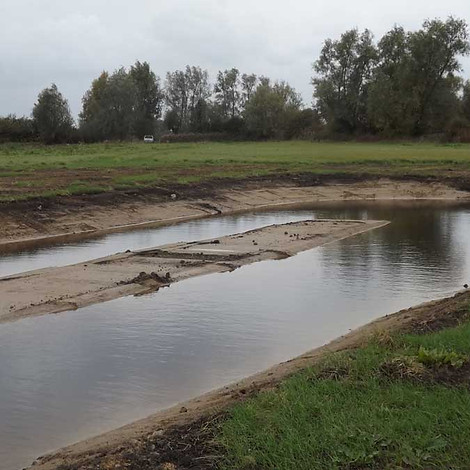The Associations History
Founded in 1956, Ely and District Wildfowler’s Association is one of several clubs shooting over land falling between the Flood-banks of the Bedford Level’s or, Ouse Washes as they are more commonly known.
The club has a long history associated with this man-made semi wetland habitat. The club’s first President was former professional Wildfowler and Marsh Shepherd, Mr Josh Scott. Scott later went on to become the first Warden of the Wildfowl & Wetland’s Trust reserve at Welney at the request of a young Peter Scott (before his Knighthood) who often travelled to Welney from Cambridge to shoot Wildfowl over the Bedford Level’s.
In Josh Scott’s day, wildfowling was a profession and Wildfowler’s, men of exceptional skill and high standing within their respective villages. Two other individuals locally famous in the Welney Area, were Will Kent and Ernie James.
In the 1950’s wildfowling on the Bedford Level’s was basically a free for all. Most Gun’s lived locally and shooting could be obtained upon request. However, a few Guns who could afford the luxury of a motor vehicle followed their pursuits on the foreshore of the Wash at Sutton Bridge, Lincolnshire. It was here that several founder members of Ely & District Wildfowlers (EDWA) also took their sport and were realising their sport was becoming attractive to visiting Gun’s with money. Visiting Guns who were more than willing to pay local men to take them out and put them under the best of the sport. And for that matter, rent tracts of land to prevent the locals having the best sporting opportunities. The use of the motor car and easier access roads was changing wildfowling and the countryside forever. The locals realised the only way forward was to form a club, thereby protecting their Shooting and that of future generations.
At a special meeting convened at the Lamb Hotel Ely on the 14th December 1956, Ely & District Wildfowler’s Association (EDWA) was formed and a set of rules drawn up. Founder members included Josh Scott and Ken Gandy and, other interested wildfowlers voted for, seconded and carried a motion to form the first EDWA committee. The members voted onto the committee were: T Richardson, G Scott, J Slater, J Wilmore, J Stevens and Mr Watkinson of Newmarket. Once the committee had been formed a club warden was appointed and it was his job to approach local farmers for permission to shoot over their property or, to offer payment for club members to shoot their properties in this superb wetland environment.
First Purchase
In the early 1960’s a small piece of land came up for sale approximately 3 miles from the village of Mepal. EDWA did not have sufficient funds to purchase the property thus, several of the founder members including Ken Gandy, Denny Harrison and Dr Becket along with other members, were prepared to loan EDWA the necessary funding to make the purchase possible. It is interesting to note that the price paid was a little over £200 for approximately 20 acres. Today (2018) the value of land on the Ouse washes has increased to over £11,000 per acre making purchases much more difficult for smaller clubs. That said the Club has worked very hard and is now lucky enough to own six properties, five of which are shot the other is left for conservation.


Conservation efforts
EDWA have been working hard with Natural England to create habitat that is good for many different species including ducks and geese.
Three of our washes have had work carried out on them in line with the High Level Stewardship scheme to make them more attractive for waders and many other species
-
Excavating specially profiled wader scrapes together with putting 5 islands in the main pond to encourage breeding without the fear of ground predators.
-
Reprofiling an existing pond and joining it with another also creating islands. Reprofiling the perimeter ditches to encourage wader activity.
-
Reprofiling of the main splash and the excavating of another with a large island in. Some of the perimeter ditches were also reprofiled to make them both Wader friendly and to prevent grazing cattle from escaping.
We have already seen success with the work we have carried out, as breeding pairs of avocets have been spotted on these washes as well as other species. Ducks have been seen nesting on these washes and have also used duck nesting tubes that we have erected.
